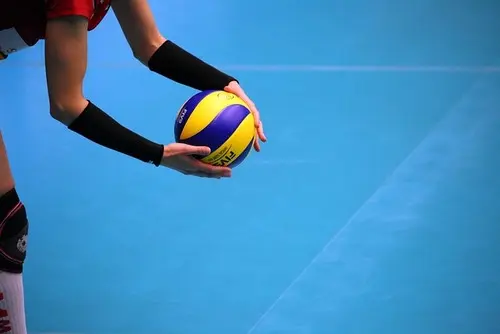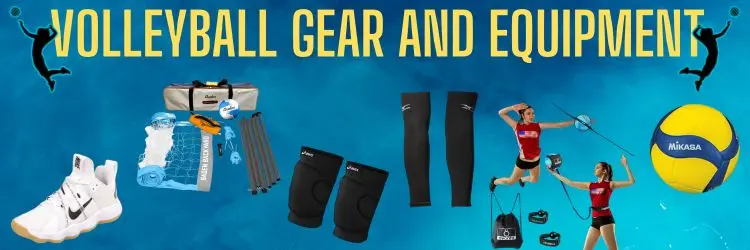Volleyball Serving Rules

Volleyball Serving Rules: Understanding the Essentials
Serving is one of the most crucial aspects of volleyball, serving as both the starting point of every rally and a potential game-changer. A powerful and precise serve can secure points directly or put the opposing team in a defensive position.
Understanding the rules governing volleyball serves is essential for players, coaches and enthusiasts to ensure fair play and effective gameplay. This article delves into the key rules, types of serves, common faults and legal techniques in volleyball serving.
The Basics of Serving
In volleyball, a serve initiates play. The serving player stands behind the end line of the court and uses one hand to hit the ball over the net into the opponent’s court.
The primary goal of the serve is to make it difficult for the opposing team to return the ball effectively, thus gaining a competitive advantage.
General Serving Rules
Service Area:
- The server must stand behind the end line within the designated service zone, which is 9 meters (29.5 feet) wide.
- The server can move freely within this zone but cannot step on or over the end line until the ball is contacted.
Order of Service:
- Teams must serve in the rotation order as specified by their lineup. Failing to follow the correct rotation results in a rotational fault and a loss of serve.
Service Execution:
- The server has 8 seconds to serve the ball after the referee signals to start.
- The ball must be hit with one hand or any part of the arm. It cannot be thrown or caught.
Ball Contact:
- The ball must be clearly hit, not pushed or carried.
- It is permissible for the ball to graze the net as long as it lands in the opponent’s court.
Positioning of Players:
- All players except the server must remain within the court and in their respective positions until the ball is served.
- Players cannot obstruct the server’s view or block the opposing team’s view of the serve.
Types of Serves
Several serving techniques can be used in volleyball, each with its unique characteristics and advantages:
Underhand Serve:
- This beginner friendly serve involves holding the ball in one hand and striking it with the other hand in an upward motion.
- It’s less powerful but easier to control.
Overhand Serve:
- The most common serve in volleyball, it involves tossing the ball in the air and hitting it with an open hand.
- Variants include the topspin serve, which gives the ball a downward motion and the float serve, which moves unpredictably in the air.
Jump Serve:
- An advanced serve where the player tosses the ball high, jumps and strikes it mid-air.
- This serve is powerful and can include topspin or float characteristics.
Hybrid Serve:
- A combination of techniques designed to confuse the opponent, such as starting as a topspin serve but executing a float serve.
Serving Faults
Serving faults occur when the server violates any serving rules. These faults result in an immediate point and serve awarded to the opposing team. Common serving faults include:
Foot Fault:
- The server steps on or over the end line during the service action.
Out of Bounds Serve:
- The ball lands outside the boundaries of the opponent’s court without being touched.
Net Fault:
- The ball fails to cross the net or touches the net and falls back into the serving team’s court.
Illegal Hit:
- The ball is pushed, carried, or hit with a closed fist (if not allowed in the league).
Service Delay:
- Exceeding the 8 second time limit to serve results in a fault.
Out of Turn Serve:
- Serving out of the designated rotation order is considered a fault.
Legal Techniques for a Successful Serve
Executing a legal and effective serve requires proper technique and adherence to the rules. Here are tips for each type of serve:
Underhand Serve:
- Hold the ball steady in your non dominant hand.
- Swing your dominant hand in a controlled upward motion to strike the ball.
- Ensure your feet remain behind the end line.
Overhand Serve:
- Toss the ball slightly in front of you with your non dominant hand.
- Use an open hand to strike the ball at its highest point.
- Maintain a firm wrist and follow through with your swing.
Jump Serve:
- Take a few steps forward for momentum and toss the ball high.
- Jump as you prepare to strike the ball with an open hand.
- Aim for precision and power, ensuring your feet remain behind the line before takeoff.
Float Serve:
- Strike the ball with a flat hand and minimal follow through.
- Aim to reduce spin to create unpredictable flight paths.
Additional Rules for Different Levels of Play
Volleyball serving rules may vary slightly depending on the level of play, such as recreational, high school, collegiate, or professional. Here are some distinctions:
Junior Leagues:
- Players may be allowed to serve closer to the net if they lack the strength for a full court serve.
High School and Collegiate Levels:
- Strict adherence to service zones and rotational order is enforced.
- Jump serves and advanced techniques are more common.
Professional Volleyball:
- Rules are stricter, with frequent monitoring of foot faults and service timing.
- Players often employ aggressive serving strategies to gain a competitive edge.
Beach Volleyball:
- Beach volleyball serving rules differ slightly. The service zone extends the entire width of the court and wind conditions often influence serving strategies.
Strategies for Effective Serving
Target Weak Players:
- Aim serves at players who struggle with receiving or setting.
Mix Serve Types:
- Alternating between float, topspin and hybrid serves can confuse the opponent.
Focus on Accuracy:
- Prioritize precise placement over sheer power, especially when targeting corners or gaps in the defense.
Maintain Consistency:
- Avoid unnecessary risks. A consistent serve minimizes faults and keeps pressure on the opponent.
Conclusion
Mastering the rules and techniques of serving in volleyball is essential for any player aiming to excel in the game. By adhering to the established rules, understanding the types of serves and avoiding common faults, players can maximize their effectiveness on the court.
Whether playing recreationally or competitively, a well executed serve is a valuable weapon that can set the tone for a successful rally. Practice, precision and awareness of the rules will ensure that your serves are not only legal but also impactful.


